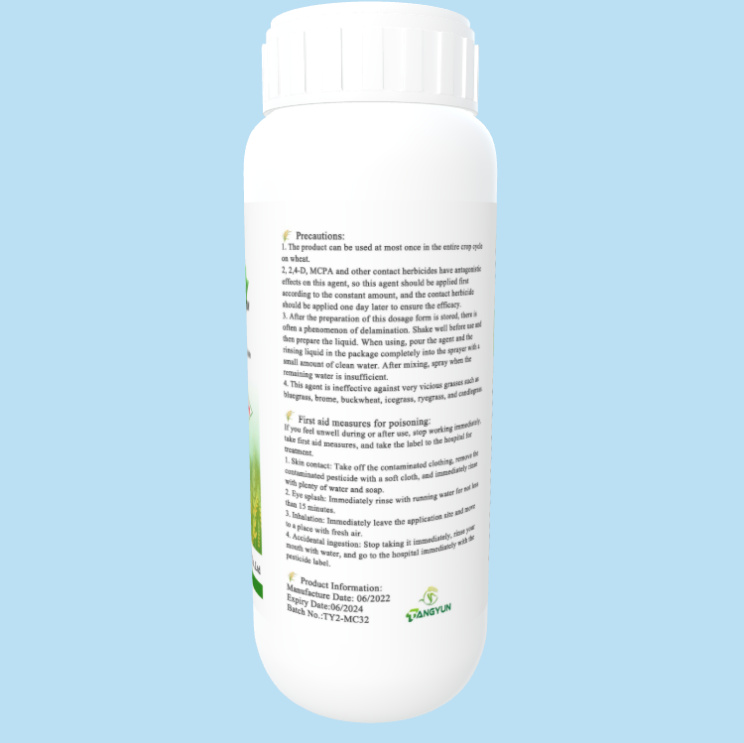Personlized Products Propamocarb 722g/Lsl - Herbicide Fenoxaprop-p-ethyl 69G/L EW – Tangyun
Personlized Products Propamocarb 722g/Lsl - Herbicide Fenoxaprop-p-ethyl 69G/L EW – Tangyun Detail:

Tech Grade: 98%TC
|
Specification |
Crop/site |
Control object |
Dosage |
|
Fenoxaprop-p-ethyl 69g/l EW |
Wheat |
Annual grassy weed |
600-900ml/ha. |
|
Fenoxaprop-p-ethyl 1.5% cyhalofop-butyl 10.5%EW |
Direct sowing rice field |
Annual grassy weed |
1200-1500ml/ha. |
|
Fenoxaprop-p-ethyl 4%+ Penoxsulam 6%OD |
Direct sowing rice field |
Annual weed |
225-380ml/ha. |
Precautions for use:
1. This product is applied after the 3-leaf stage of wheat to before the jointing stage, when the weeds are just emerging or the 3-6 leaf stage of annual grass weeds. Stems and leaves are sprayed evenly.
2. Apply evenly in strict accordance with the recommended application techniques. It is strictly forbidden to spray the grass in multiple places to avoid heavy spraying or missed spraying. It is not advisable to apply it within 3 days with heavy rain or winter frost season to ensure the efficacy.
3. In wheat fields under drought conditions, as well as in the control of serrata, hard grass, alder grass and older target grass weeds with more than 6 leaves, the dosage should be the upper limit of the registered dosage.
4. This product cannot be used for other grass crops such as barley, oats, barley, barley, corn, sorghum, etc.
5. It should be applied in a windless weather to prevent the liquid from drifting to the surrounding sensitive crops.
Precautions:
1. The product can be used at most once in the entire crop cycle on wheat.
2, 2,4-D, dimethyl tetrachloride and diphenyl ether and other contact herbicides have antagonistic effects on this agent, so this agent should be applied first according to the constant amount, and the contact herbicide should be applied one day later to ensure the efficacy.
3. After the preparation of this dosage form is stored, there is often a phenomenon of delamination. Shake well before use and then prepare the liquid. When using, pour the agent and the rinsing liquid in the package completely into the sprayer with a small amount of clean water. After mixing, spray when the remaining water is insufficient.
4. This agent is ineffective against very vicious grasses such as bluegrass, brome, buckwheat, icegrass, ryegrass, and candlegrass.
Quality guarantee period: 2 years
Product detail pictures:






Related Product Guide:
Our mission will be to become an innovative supplier of high-tech digital and communication devices by furnishing benefit added structure, world-class manufacturing, and service capabilities for Personlized Products Propamocarb 722g/Lsl - Herbicide Fenoxaprop-p-ethyl 69G/L EW – Tangyun , The product will supply to all over the world, such as: Ukraine, UK, Iran, We focus on providing service for our clients as a key element in strengthening our long-term relationships. Our continual availability of high grade products in combination with our excellent pre-sale and after-sales service ensures strong competitiveness in an increasingly globalized market.
This company conforms to the market requirement and joins in the market competition by its high quality product, this is an enterprise that have Chinese spirit.







